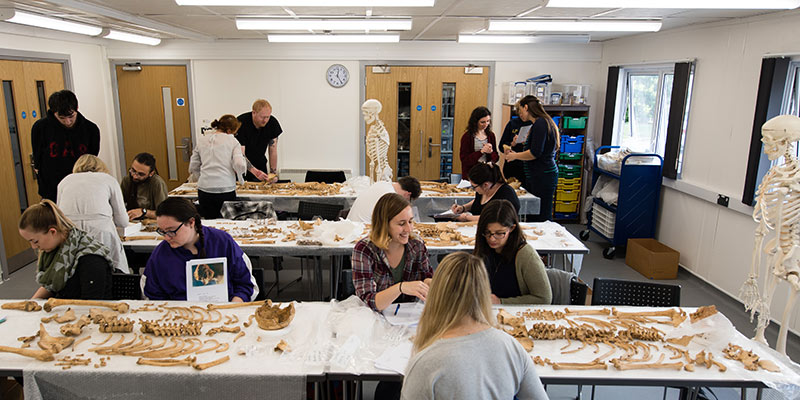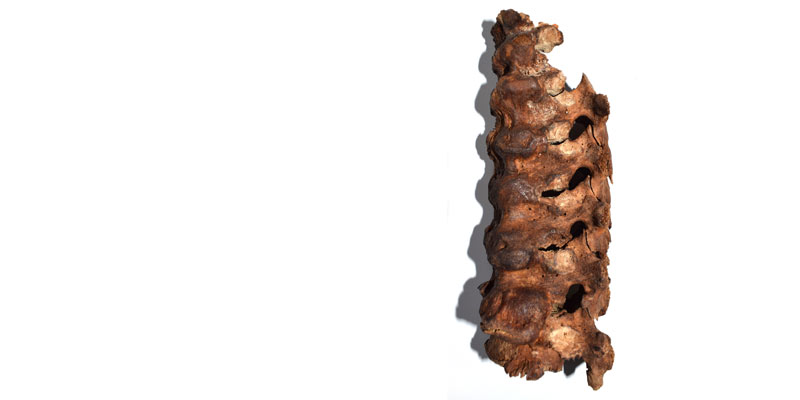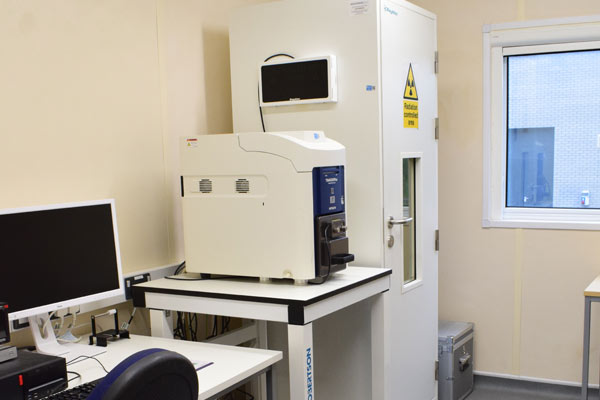
Osteoarchaeology
At PalaeoHub we have an adaptable laboratory dedicated to the study of human remains, with a large teaching collection of human remains from a range of periods and state-of-the-art equipment.
This lab is used for teaching undergraduate and postgraduate students, as well as for independent lab practice and research by taught and research students.
We hold human skeletal remains from a range of periods and sites across the UK, including:
- 57 skeletons and 60 cremation burials dating to the Roman period from a roadside cemetery in Baldock
- 41 skeletons from a Roman villa site in Lincolnshire
- 68 skeletons from a medieval monastic cemetery at Malmsbury dating to the 12th- to 13th-centuries
- 278 medieval monastic and lay individuals from St James Abbey in Northamptonshire, dating from the 12th- to 16th-century
We also collaborate with commercial archaeological partners in order to gain access to recently excavated skeletal remains, allowing staff and students to conduct original research projects and dissertations on a range of topics.
Contact us
Malin Holst
Academic Lead
Dr Paola Ponce
Academic Lead
Becky Knight
Technician

Brothwell Pathological Collection
Our permanent Brothwell Pathological Collection is a comprehensive and unique assemblage of human remains affected by a range of pathological conditions, including:
- dental disease
- trauma
- neoplastic disease
- congenital conditions
- degenerative joint disease
- infectious disease
- metabolic conditions
Teaching facilities
We have a dedicated, fully equipped osteology laboratory which is adjacent to the skeletal collections' room for easy access to the skeletal remains.
We have a number of teaching aids to help students with learning human anatomy, including:
- skeletal models
- disarticulated human bone casts
- dental casts
- pubic symphysis casts for age estimation
- a range of callipers, including sliding coordinate and spreading callipers
- specially designed osteometric boards for calculating living height
- freely accessible anatomy software
- a range of electronically available anatomy and palaeopathology publications
Further facilities include:
- radiography system
- photography equipment
- scanning electron microscopy
- 3D surface scanner
- high-resolution microscopes

Contact us
Malin Holst
Academic Lead
Dr Paola Ponce
Academic Lead
Becky Knight
Technician